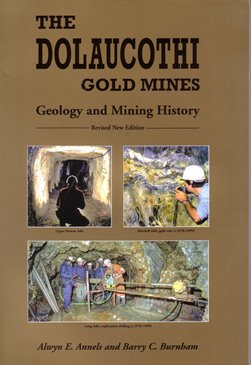 Welsh Gold has always generated interest and the Dolaucothi Gold Mines (also known as Ogofau) are probably the oldest mines in the United Kingdom. They are the only known mines outside the Dolgellau gold belt and lie about 120km north-west of Cardiff, close to the village of Pumsaint in Carmarthenshire. They have been worked periodically from Neolithic and Roman times until final closure in 1940. The site was resurrected from dereliction between 1978 and 1999 by the staff and students of the Department of Mineral Exploitation (later the School of Engineering) of the University of Cardiff. In 1999 the National Trust took over the lease and has continued the development to create today’s mining heritage site.
Welsh Gold has always generated interest and the Dolaucothi Gold Mines (also known as Ogofau) are probably the oldest mines in the United Kingdom. They are the only known mines outside the Dolgellau gold belt and lie about 120km north-west of Cardiff, close to the village of Pumsaint in Carmarthenshire. They have been worked periodically from Neolithic and Roman times until final closure in 1940. The site was resurrected from dereliction between 1978 and 1999 by the staff and students of the Department of Mineral Exploitation (later the School of Engineering) of the University of Cardiff. In 1999 the National Trust took over the lease and has continued the development to create today’s mining heritage site.
The two books reviewed here, although by different authors, are essentially complementary. The first describes the geological setting, the mining and mineral processing and industrial archaeological heritage of the old mining area, whilst the second gives a detailed description of the work undertaken between 1978 and 1999 to restore the abandoned mine workings and create a unique experience in the industrial heritage of Wales.
The first book, co-authored by a mining geologist and an industrial archaeologist, is a revised and expanded edition of a publication that had seen three editions since 1983, the last being in 1995. Data from work undertaken by earth scientists and archaeologists in the succeeding period are included together with many colour photographs and diagrams. The text starts by presenting details of the history of the site’s ownership and a chapter placing the mineralisation in both the local and a Welsh context. The evidence of the Roman mining and ancillary operations are described followed by details of the late 19th century and early 20th century workings. The final phases of commercial operation between 1930 and 1940, which at their peak employed up to 200 people, are described. The book finishes with a chapter covering the processing of the ores and highlights the visible remains of the processing sites and buildings.
 The second book covers a period of 21 years from 1978 to 1999 and describes how an initial vision of a centre for specific higher education purposes expanded to the creation of an educational centre for the local community and visitors of all ages and levels of knowledge and experience.
The second book covers a period of 21 years from 1978 to 1999 and describes how an initial vision of a centre for specific higher education purposes expanded to the creation of an educational centre for the local community and visitors of all ages and levels of knowledge and experience.
Work on the site is divided into three phases each of which forms a chapter. The first, from 1978 to 1984, covers the initial rehabilitation of the abandoned workings and describes the work done, how it was progressed and who was involved. The second, from 1984 to 1988, includes the use of the mine as an educational facility for both teaching and research and looks at further developments which included the installation of 1930s surface buildings and equipment salvaged from a closed mine in North Wales. The final phase, from 1988 to 1999, covers later developments at the site and looks at the significant changes from a site used by a limited group from the University of Cardiff to one of much wider use and interest. The whole text is well laid out and informatively written and particularly well illustrated with large numbers of photographs and diagrams.
These books will be a fascinating and nostalgic read for many, and for those less familiar with the mines, certainly the first will be an essential read for anyone considering a visit to the area.
Reviewed by Stephen Cribb
THE DOLAUCOTHI GOLD MINES – Geology and Mining History by Annels, Alwyn E and Burnham, Barry C. (2013) Caerleon: APECS Press. 99pp ISBN 978-0-9563965-5-6 List price: £12.50 pbk www.apecspress.co.uk
DOLAUCOTHI GOLD – A Vision Realised by Isaac, Alun. (2012) Caerleon: APECS Press. 200pp
ISBN 978-0-9563965-2-5 List price: £12.50 pbk. www.apecspress.co.uk